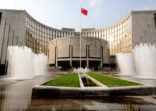China’s retail mutual fund industry provides a huge opportunity for foreign players. Currently at around RMB 10trn ($1.58trn), Baker expects that the industry will grow to $12trn by 2027, making it the largest fund market in the region.
At the moment, foreign managers can sell their funds to the onshore retail market via the Hong Kong-China Mutual Recognition of Funds (MRF) scheme (in 2020, setting up an onshore mutual fund management firm strictly addressing China’s retail investor base will be possible).
However, the MRF is a cross-border scheme that relies on distribution through a variety of channels — such as domestic banks and online platforms operated by Alibaba and Tencent — to reach China’s retail investor base.
Baker, who spoke during a webcast yesterday organised by Calastone, said online distribution in China has massive potential to target the mass retail market. “However, these platforms still do have limitations.”
For example, robo-advisory services in China are still at the beginning stages and can only offer very simple plain vanilla products and unsophisticated portfolios.
In addition, online fund platforms do not know how to properly sell asset management products. Baker likens their fund sales practices to “selling a pair of shoes”.
“It is often that the funds are actually ranked by short-term performance, making it extremely hard for offshore funds to compete.”
She said Zeal Asset Management, the first entrant in the MRF scheme, initially chose to sell its fund to retail investors only through Ant Financial’s online platform.
Zeal learned “the hard way” that “online distribution is certainly not a silver bullet”, Baker said, without elaborating.
The firm has since added more distributors for its MRF fund. Although the fund is still focusing on online distribution with Ant Financial and WeChat, as well as some online independent financial advisers such as Tiantian and LuFax, it includes Ping An Securities as a distribution partner.
JP Morgan’s strategy
Baker believes that online and mobile distribution of funds should be integrated into a much broader strategy.
Having a carefully laid-out, integrated strategy was one of the key reasons behind JP Morgan Asset Management’s success in the MRF scheme, she said. “We estimate their products are attracting around or over 80% of the MRF flows at present.”
Baker said that the firm rolled-out their fund in a strategic manner across a number of distribution channels. Apart from distributing their funds through its onshore joint venture, China International, the firm is also using a combination of domestic banks, foreign banks offering “superior” service and are familiar with offshore products, brokerage firms, independent financial advisors and online channels.
Domestic banks, especially the big four state-owned banks, dominate the fund distribution landscape with their extensive branch networks and high level of familiarity with local investors, Baker added.
However, relying on the domestic banks alone may be challenging, Matthew Phillips, PwC’s Hong Kong-based financial services leader for China and Hong Kong, told FSA previously.
“Foreign players that have already partnered with the leading banks and insurers have found a significant degree of success and have built very sizable businesses that are profitable,” he said. “But there are relatively few opportunities to do that because there are only a few large banks.”
The slow MRF scheme
Although the Hong Kong-China MRF scheme launched in 2015, its development has been hampered by slow regulatory approval from the Chinese regulators.
Only nine Hong Kong-domiciled funds are for sale in China, versus the two-dozen China-domiciled funds already approved by Hong Kong’s Securities and Futures Commission.
“[The slow regulatory approval] is just a part of the much wider control of capital outflows in China,” Baker said. For example, Chinese regulators stopped giving qualified domestic institutional investor (QDII) quotas in 2015. The QDII programme allows domestic managers to raise onshore money to be invested abroad.
Despite its slow development, Baker is optimistic that the MRF scheme will grow long-term. The size of the programme has been growing slowly, now with around $2bn in assets. Z-Ben projects that the programme has the potential to grow to around $65bn by 2022.
She also expects more MRF funds to be available for sale in the mainland this year given improvements in the regulatory approval process.
For example, BEA Union’s Asian fixed-income strategy gained approval in January to be sold in the mainland.
However, she noted that the fund took two years to be approved by China’s regulators.
“I think the MRF is going to be a testing ground for the Chinese regulators to see, in a more controlled way, how outflows are happening,” she said.

















